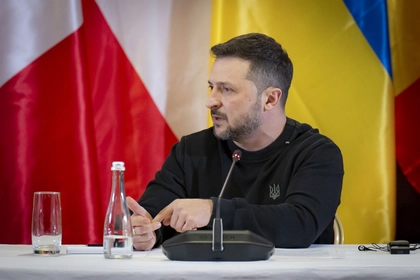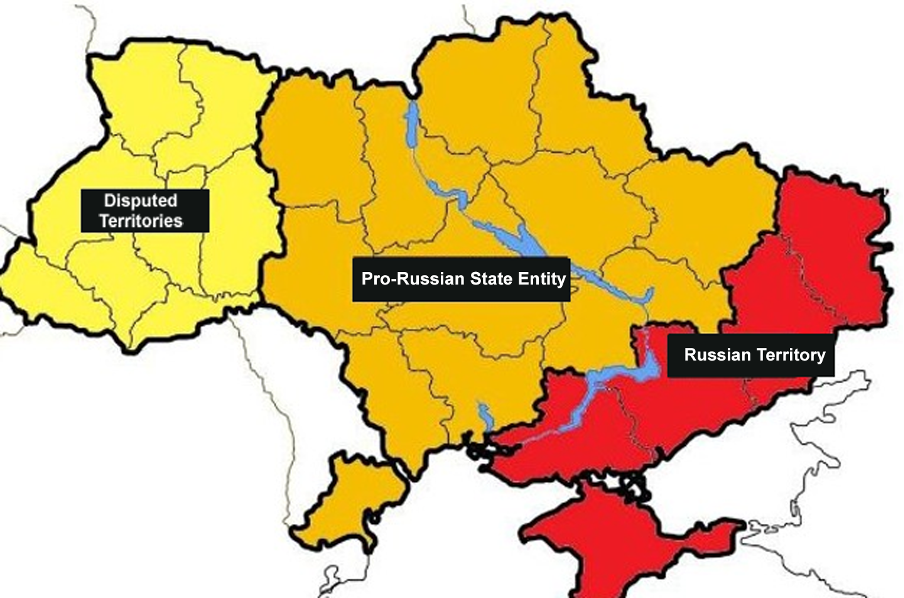Ukrainian forces have reportedly begun using heavy-duty Vampire drones to deliver robot dogs to positions, according to a video circulating on social media.
The video, which Kyiv Post could not independently verify, shows the drone lifting the robot to a small height, hovering briefly, and then landing the robot before flying away.
JOIN US ON TELEGRAM
Follow our coverage of the war on the @Kyivpost_official.
A Ukrainian aerial scout, speaking anonymously to Kyiv Post, said that soon, drones designed to rapidly deploy infantry on the battlefield or behind enemy lines may be developed.
“A swarm of UAVs dropping personnel directly into enemy trenches would be a formidable force and could be used repeatedly,” he said.
He added that the technology demonstrated in the video may revolutionize airborne landings, eliminating the need for soldiers to descend on parachutes under enemy fire, as happened during the Normandy landings in World War II.
As reported earlier by Kyiv Post, the Ukrainian military has begun using robot dogs at the front lines. These ground-based, stealthy drones can deliver munitions and medical supplies to hard-to-reach areas and conduct reconnaissance of enemy positions. Equipped with cameras and silent operation, the robots can transmit video and audio data in real time. Reports suggest these robots have alarmed Russian soldiers who have encountered them.

Ukraine’s Lost 40% of Kursk Region Gains Official Says
Yevhen Alkhimov, press officer for the Ukrainian 28th Separate Mechanized Brigade, told UNIAN that robot dogs are quiet and undetectable compared to FPV drones, which lose their signal when they enter underground spaces. Robot dogs can be sent into enemy trenches or basements to scout or carry explosives, significantly aiding operations.
“They can go where aerial drones can’t. This is the main advantage,” Alkhimov said. “You can send them ahead of an assault group to get a clear view of enemy positions.”
He disclosed that robot dogs can quietly approach enemy locations and record audio, making them highly valuable for intelligence gathering. They can also carry landmines to blow up enemy strongholds or set target sensors for artillery strikes.
According to Alkhimov, weighing about 12 kg, the robot dog can carry a load of up to 24 kg, making it suitable for transporting mines, medical supplies, or ammunition over two and a half kilometers by remote control. It can travel as fast as 8 km/h, comparable to a human running. However, he acknowledged that the robots could struggle in tall grass.
Alkhimov also said that on the front lines, no vehicles are used for deliveries, and drones like the “Vampire” are crucial for logistics.
“These robot dogs, and the wheeled unmanned systems we currently use are valuable for logistics. I believe their capacity will improve over time, allowing them to carry even heavier loads,” he added.
The Vampire drone, developed by the Ukrainian company SkyFall, is a large hexacopter capable of lifting payloads of up to 15 kg (33 pounds) to heights of 400 meters. It can deploy various types of munitions—thermobaric, cumulative, and high-explosive—allowing it to target a range of Russian assets, including tanks and other armored vehicles.
Equipped with a thermal imager, the drone can operate effectively at night. Developers noted that the Vampire drone is difficult to detect and shoot down in the dark, as Russian forces would need thermal imaging sights or night vision devices to hit the hexacopter with small arms.
The price of each UAV starts at $10,000. It has a flight range of 10 km (6.2 miles) and has a communication range of 6 km (3.7 miles). The drone’s flight speed is up to 40 km/h with a full load and 80 km/h without one. It can fly for 37 minutes without a load and 23 minutes when carrying a 10 kg (22 pounds) payload.
You can also highlight the text and press Ctrl + Enter






